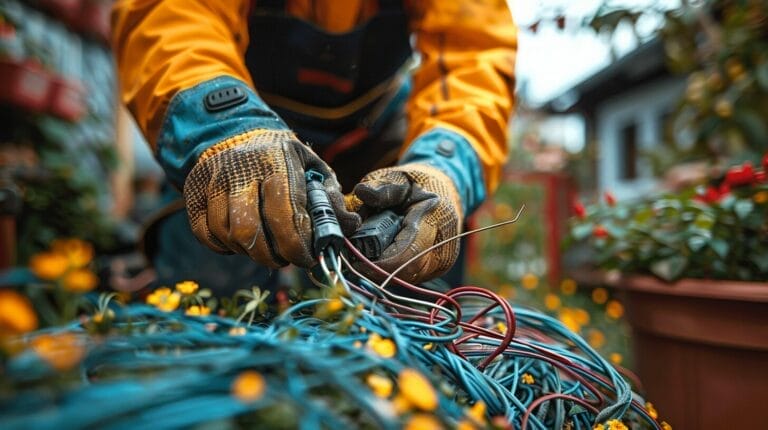How to Remove Nipple Light Fixture: Easy DIY Guide
When it comes to tackling the task of removing a nipple light fixture, we’ve discovered that having a clear plan and the right tools can make all the difference. The process may seem challenging at first, but with a methodical approach, it can be more manageable than you might think. Stay tuned in our How to Remove Nipple Light Fixture guide to uncover the key steps and insights that will help you navigate this DIY project with confidence and ease.
Key Takeaways
- Understand the nipple light fixture design for safe removal.
- Gather essential tools like a screwdriver set and voltage tester.
- Power off, twist counterclockwise, and detach the fixture carefully.
- Clean the area and mark installation points for a new fixture.
- Follow manufacturer’s instructions to install the new light fixture securely.
Identify and Understand the Nipple Light Fixture in Your Home

The first step in safely removing a nipple light fixture is identifying the type of fixture you have. Take a close look at the fixture attached to your ceiling to understand its design and features. Understanding the structure of the light fixture will help you grasp how it’s connected and what steps are needed for its removal.
Before attempting removal, take safety precautions to ensure no accidents occur. Turn off the electricity, handle electrical wires carefully, and follow safety measures throughout the process. Familiarize yourself with the wires connected to the fixture and their functions to avoid any mishaps.
Assemble the Necessary Tools for Removing the Nipple Light Fixture

To effectively remove a nipple light fixture, gather the necessary tools. You’ll need a sturdy ladder for safe reach, safety goggles to protect your eyes from debris, and a screwdriver set to loosen the fixture screws. A voltage tester is essential to ensure the electricity is turned off before you begin. Lineman’s pliers will be handy for disconnecting wires, and a flashlight will illuminate your workspace, making it easier to see what you’re doing.
Step-by-Step Guide on How to Remove the Nipple Light Fixture

After assembling the necessary tools, the next step is to power off and safely disconnect the fixture. Follow these steps for effective removal:
- Disconnect Power: Turn off the power source to ensure safety.
- Twist and Remove: Twist the fixture counterclockwise to release it.
- Free from Bracket: Gently wiggle the fixture to detach it from the bracket.
Ensure the power source is off when disconnecting the fixture. Once removed, handle the fixture carefully and find a secure storage place if you plan to replace it with a new light fixture.
Prepare for the Installation of a New Light Fixture

Before installing a new light fixture, clean up any debris or dust left behind from the removal. This ensures a smooth installation process. Consider whether you want to reinstall a nipple light fixture or opt for a different style. This decision will dictate the next steps.
Measure and mark the installation points for a precise and secure fit. Use a measuring tape to ensure the new fixture is centered and at the correct height. Marking positions for screws or brackets will guide a hassle-free installation.
Step-by-Step Guide on How to Install a New Light Fixture

After cleaning and preparing the area, measure and mark the installation points for the new fixture. Follow the manufacturer’s instructions for installation, which typically involves securing the base or bracket to the ceiling using screws. Connect the wires, matching the colors correctly and twisting them together securely. Safety measures are essential during this step.
Once the connections are secure, attach the fixture to the base or bracket, twisting it into place. Test the new light fixture to ensure it’s working correctly. Troubleshooting tips can help diagnose and fix any issues.
Conclusion
Overall, removing a nipple light fixture can be a simple DIY task with the right tools and steps. By understanding the fixture, assembling the necessary tools, and following a step-by-step guide, you can easily remove and replace the fixture in your home.
Remember to always prioritize safety, power off the fixture before removal, and follow manufacturer instructions for a successful installation of a new light fixture.
Happy DIY-ing!
Frequently Asked Questions
How do I safely remove a nipple light fixture?
To remove a nipple light fixture, first turn off the power at the breaker. Make sure to hold the wire in place and twist the nut holding the fixture in place. Follow the steps in reverse order to disconnect the bracket and free the ring from the ceiling.
What tools do I need to remove a nipple light fixture?
You may need a drill, wire stripper, and screwdriver to successfully remove a nipple light fixture.
Can I replace the nipple light fixture with a different style?
Yes, you can replace the nipple light fixture with a different design or type of fixture that suits your preference. Just make sure the new fixture matches the wiring in your ceiling.
How can I determine which wire is which during the removal process?
The black wire is typically the “hot” wire, the white wire is the “neutral,” and the copper wire is the “ground.” It’s important to double-check these before proceeding with the removal.
Are there any safety precautions I should take when removing a nipple light fixture?
It’s always recommended to turn off the power at the breaker and double-check that the electricity is off before starting any work on the fixture. Make sure to hold the wires securely and avoid touching the exposed wires with your bare hands.







